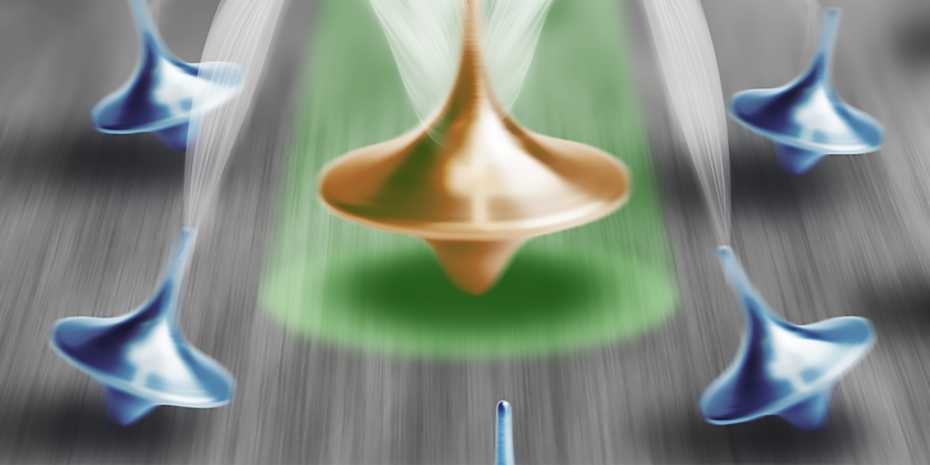Jun 25 2019
Nuclear magnetic resonance (NMR) spectroscopy has enabled the capture of the spatial structure of biochemical and chemical molecules in recent decades. Currently, scientists from ETH have discovered a technique to use this measurement principle for individual atoms.
 To measure the precession a carbon nucleus, the ETH Zurich researchers used the spin of a neighbouring defect in the crystal lattice as a sensor. (Image credit: ETH Zurich/Jan Rhensius, Kristian Cujia)
To measure the precession a carbon nucleus, the ETH Zurich researchers used the spin of a neighbouring defect in the crystal lattice as a sensor. (Image credit: ETH Zurich/Jan Rhensius, Kristian Cujia)
NMR spectroscopy is one of the most significant techniques for physicochemical analysis. It can be applied for accurate determination of the molecular structures and dynamics. The significance of this technique is also confirmed by the recognition of two most recent Nobel laureates from ETH Zurich, Richard Ernst and Kurt Wüthrich, for their contributions to fine-tuning the technique.
The technique is based on nuclear magnetic resonance, which exploits the fact that specific atomic nuclei interact with a magnetic field. Here, the main factor is the nuclear spin, which is analogous to the spinning of a child’s top. In the same way in which a top starts wobbling, which is termed as precession by experts, nuclear spins exposed to a magnetic field start to precess. This produces an electromagnetic signal that can be measured with the help of an induction coil.
Higher Resolution
A research team headed by Christian Degen, Professor of Solid-State Physics at ETH Zurich, has devised a new strategy, rendering it feasible to directly track the precession of single nuclear spins. By contrast, traditional NMR measurements normally necessitate at least 1012 to 1018 atomic nuclei to register a measurement signal.
As part of the study, the behavior of carbon-13 atoms in diamonds was investigated by the ETH scientists. Instead of using traditional techniques for measuring the precession of the carbon nucleus, the spin of an adjacent electron in an N-V centre—a defect in the crystal lattice of diamond—was used as a sensor.
Kristian Cujia, a doctoral student in Degen’s team, summarized the principle: “We use a second quantum system to study the behaviour of the first quantum system. In this way, we created a very sensitive way of measurement.”
Potential for Future Applications
It is challenging to pin down quantum systems since any measurement will also have an impact on the system under observation. Hence, the scientists could not track the precession continuously; there would have been a drastic change in its movement.
The researchers overcame this challenge by developing a unique measurement technique for capturing the spin of the carbon atom by carrying out a series of weak measurements in rapid succession. Consequently, they could restrict the impact of their observation to a large extent that it had no impact on the system measurably, leaving the original circular motion evident.
Our method paves the way for remarkable advances in NMR technology. This potentially enables us to directly record the spectra of individual molecules and analyse structures at the atomic level.
Christian Degen, Professor of Solid-State Physics, ETH Zurich
To begin with, the physicists recognized the carbon nuclei’s three-dimensional position in the diamond lattice with atomic resolution. They see immense potential in this development. Detailed NMR measurements such as this could result in a totally new understanding, as has already been the case with traditional NMR spectroscopy in recent decades.
This study was performed in the framework of the National Centre of Competence in Research Quantum Science and Technology (NCCR QSIT).